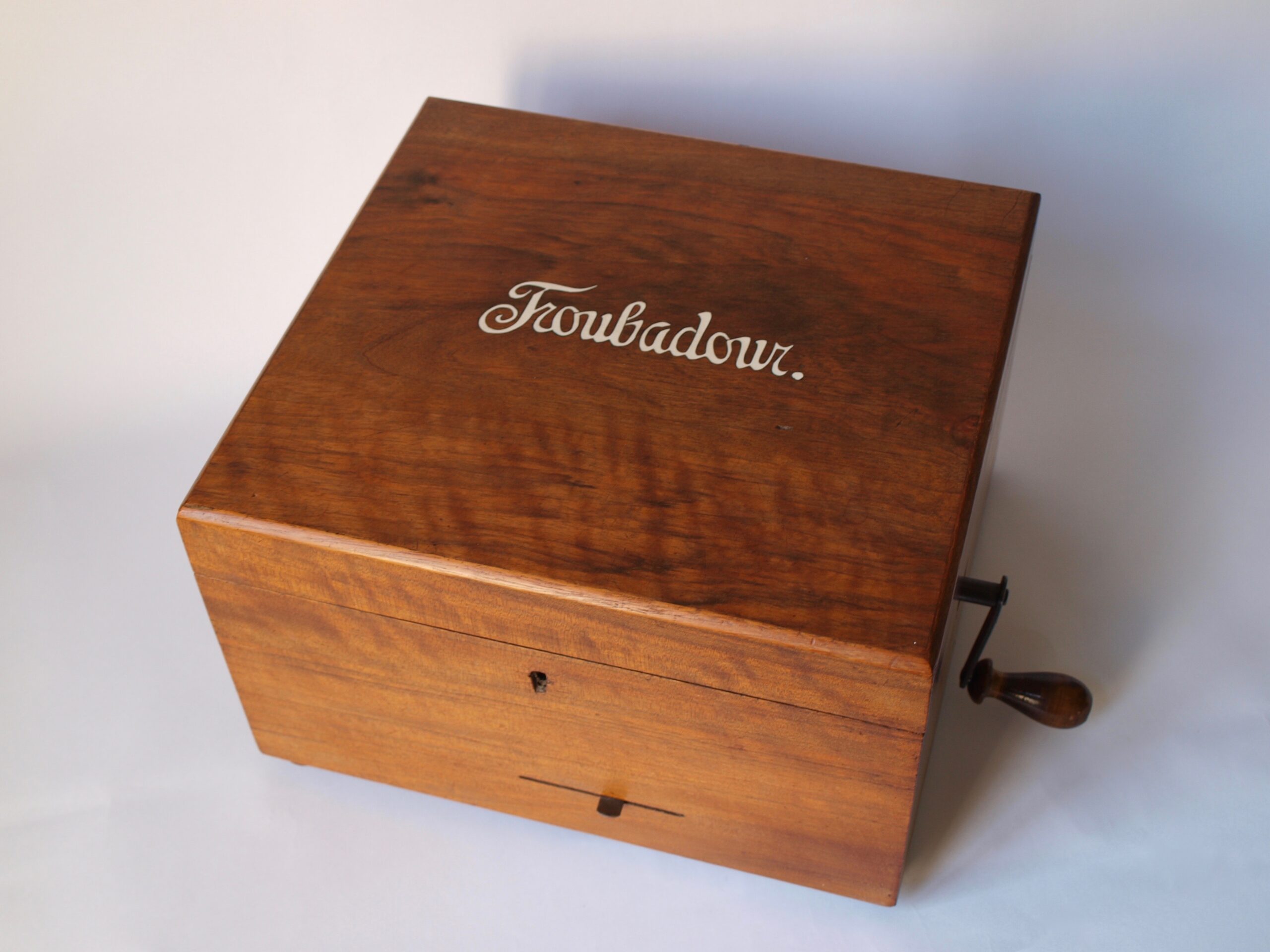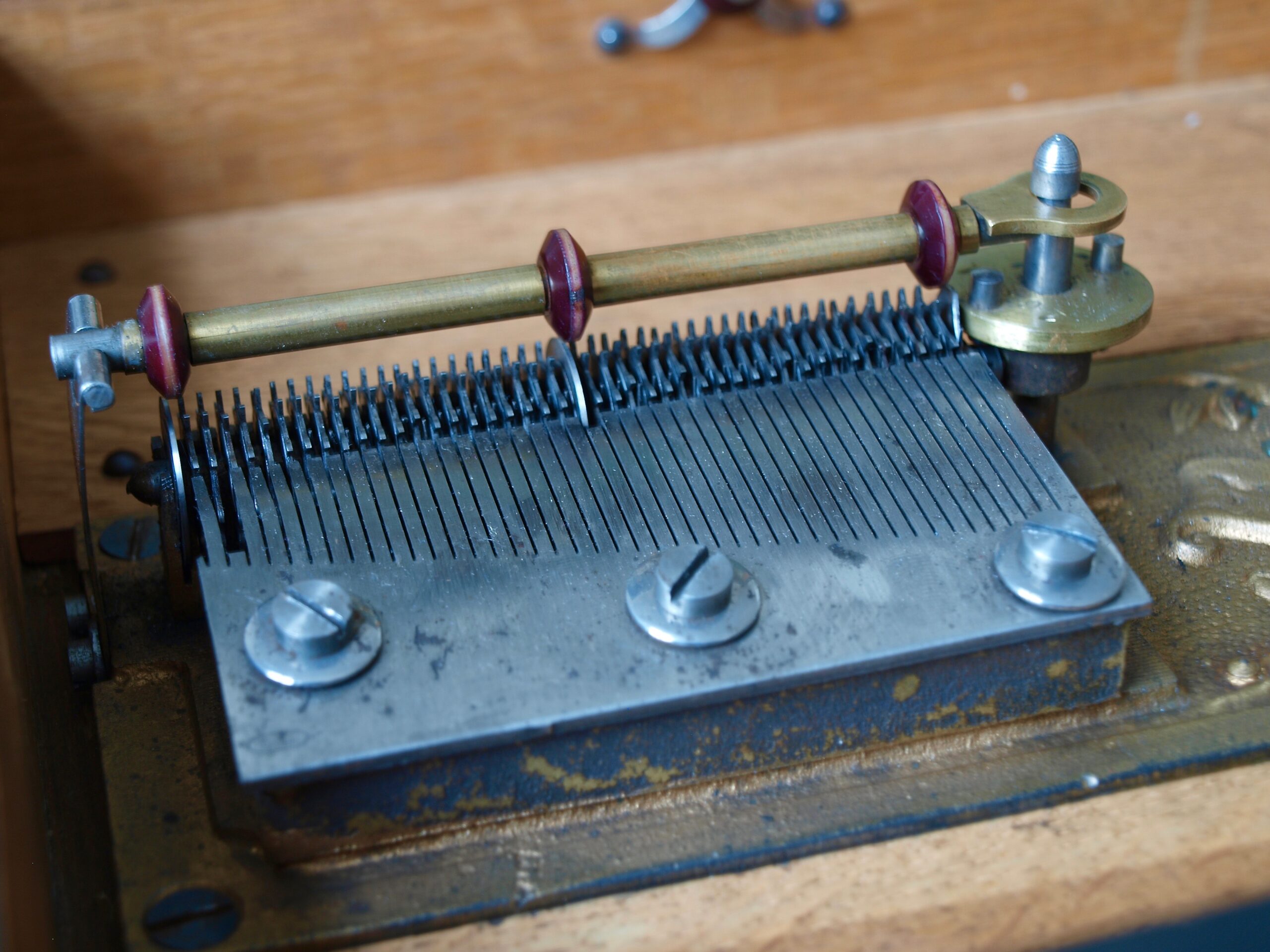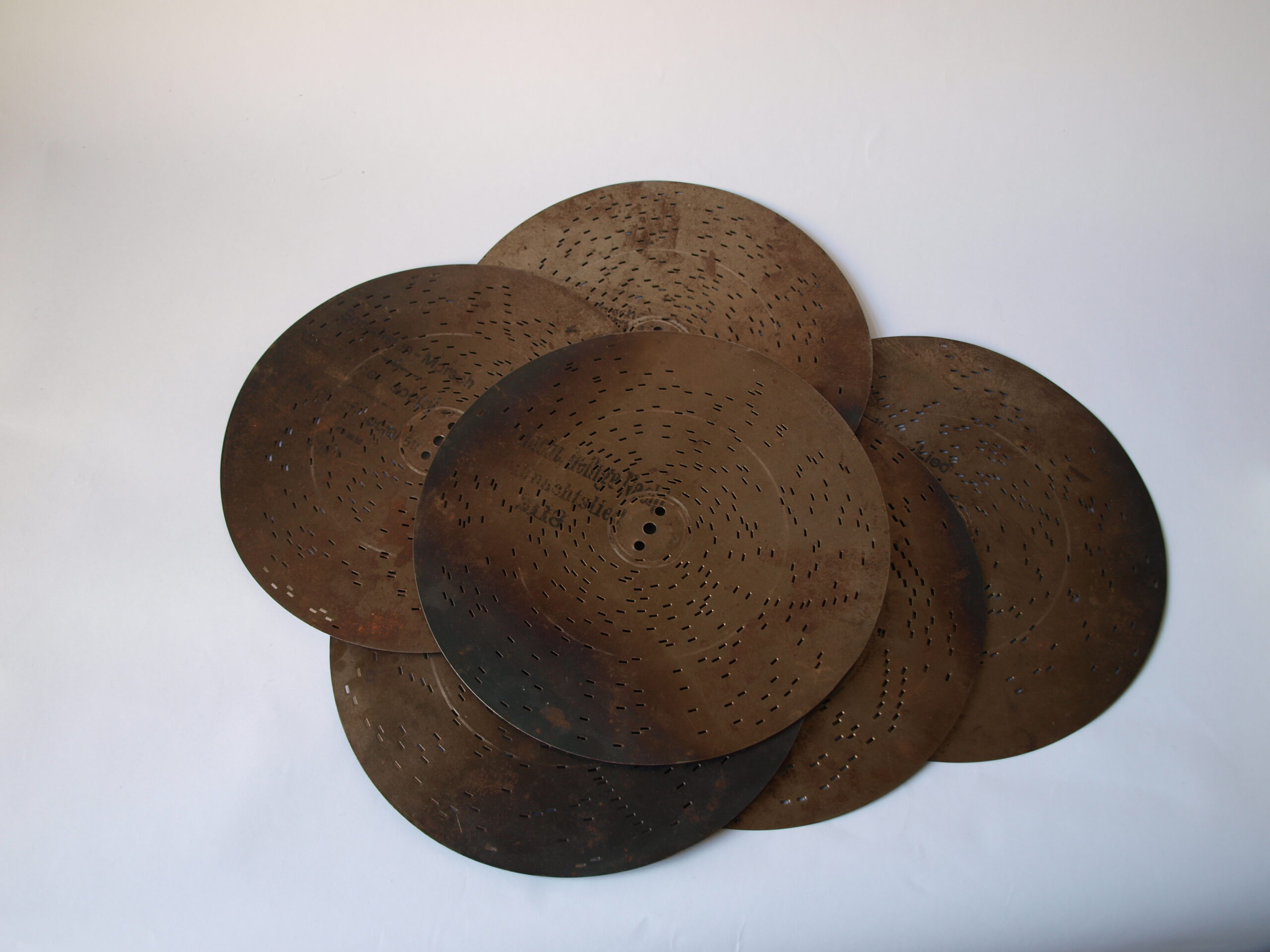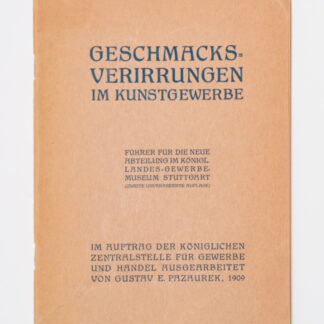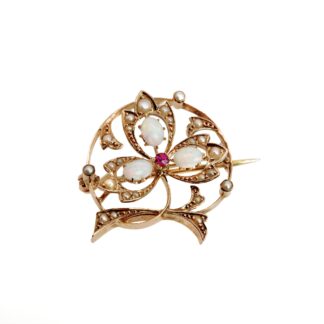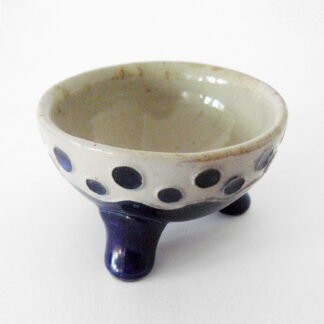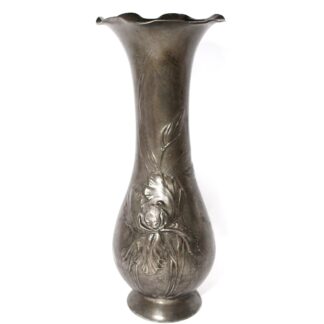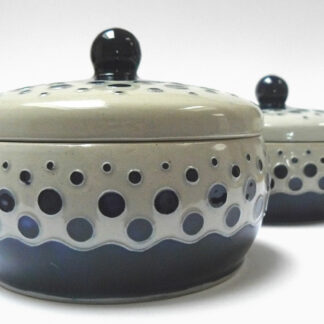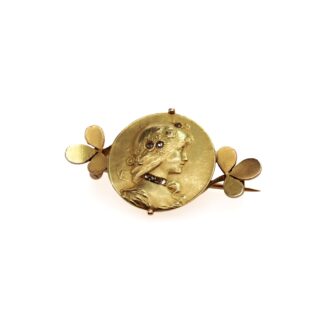Description
Symphoniums like this were invented in the 1890s and superseded the technology of the phonograph, which had been developed by Thomas Edison in 1878. Punched metal disks now replaced the sensible wax barrels and a metal comb resonated the sound. And they still fully function today!
This well-preserved symphonium has been assembled by the Troubadour Musikwerke in Leipzig, Saxony, and dates to around 1900. The company was founded by trained clocksmith Wilhelm Rettmeyer in the 1890s, when it was registered under the name “Fabrik mechanischer Musikwerke Troubadour Rettmeyer & Co.” in 1897. Only after a year, in 1898, the company was taken on by the Grosz brothers, who began to assemble symphoniums with instrumental combs until 1914.
This automaton is a small sized companion device. The inside lever is easy to hinge up in order to chuck the disk, which is placed on three metal pins and, with the lever closed, is tightly led over the comb. The device is wound up by a crank mechanism on the right-hand side. The speed of the melody can be adjusted by a regulator at the front of the wooden case.
The symphonium will be delivered with six punched disks. 1) Silent Night, Holy Night, 2) The Internationale, 3) Marsh Sotsialistov, 4) Carmen Polka, 5) L’enfant trouvé, 6) O du fröhliche.
A well-preserved chromolithography is glued to the inside of the lid, illustrating a quite gallant scene. The small automaton takes its listeners back to the delightful and enticing time of the Belle Epoche and raises a romantic atmosphere in any home. Especially on Christmas, the tender and romantic melodies swift through the house with a very sense of the fondest memories and romance.
For further reading:
Goldhoorn, Luuk, Troubadour, eine seltene Plattenspieldose, in: Das Mechanische Musikinstrument 90/2004 S. 32-34.
Ord-Hume, Arthur W.J.G., The musical box: a guide for collectors, Atglen 1995.
Raizman, David: History of Modern Design, London 2003.


